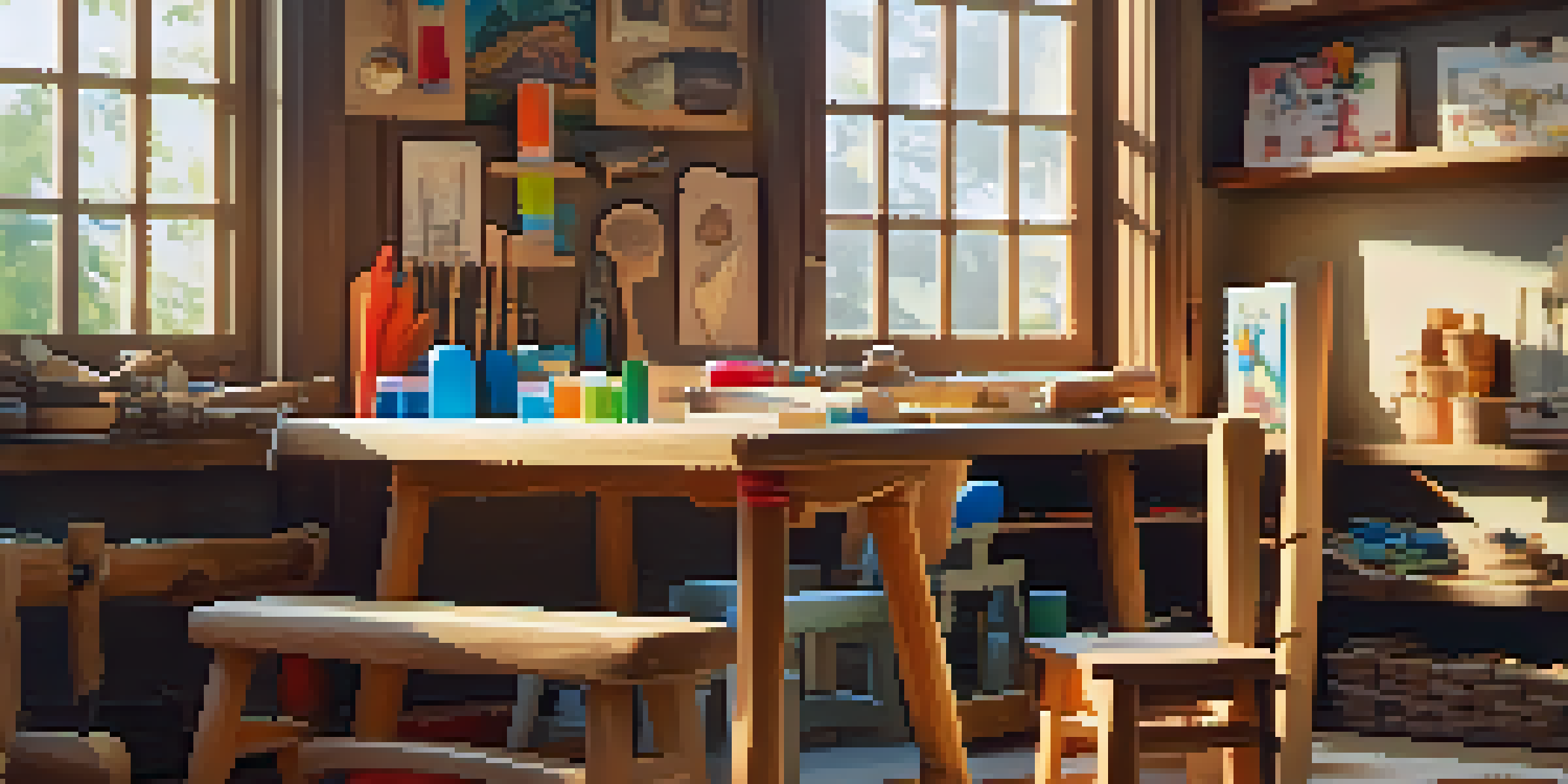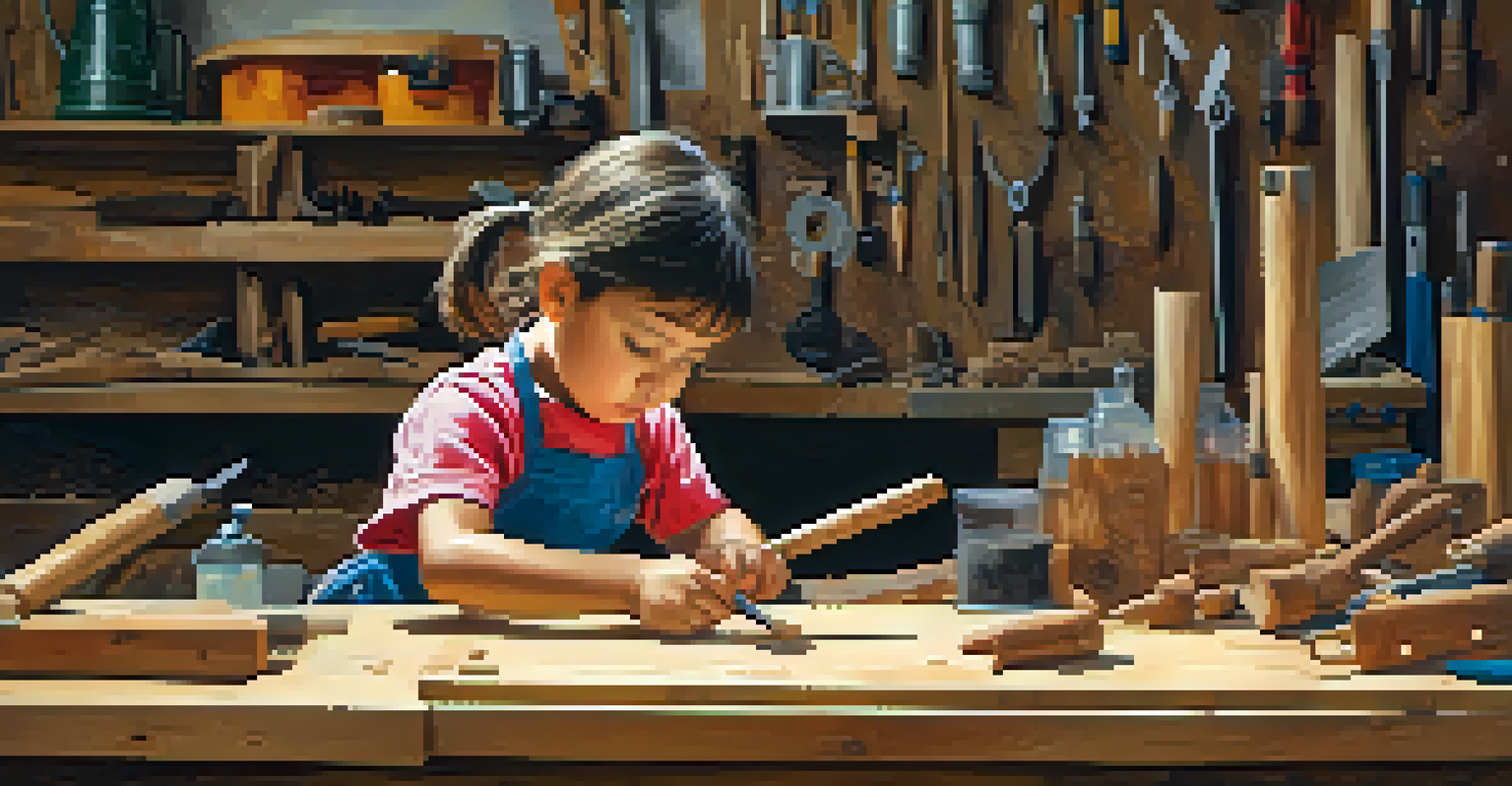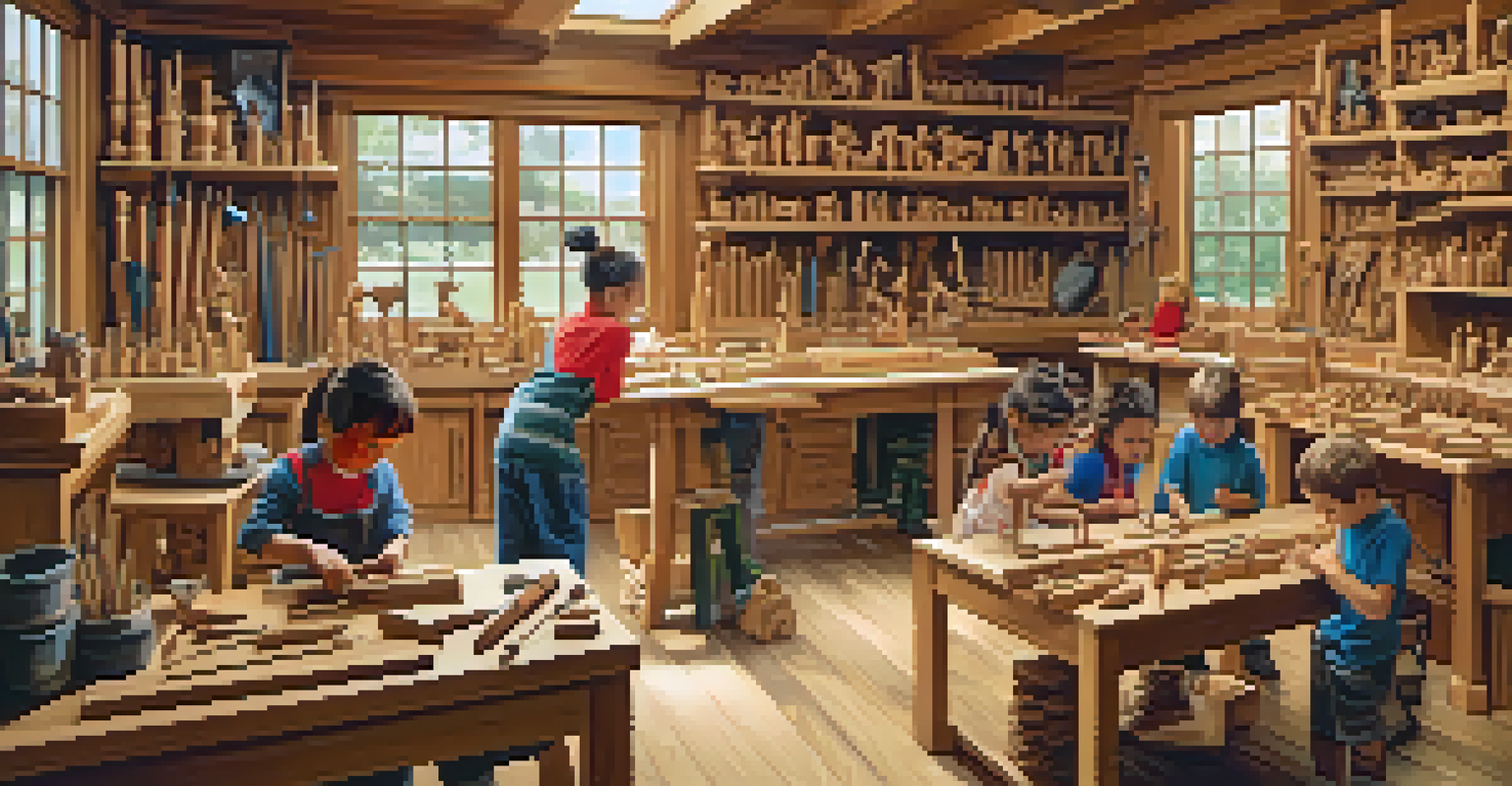Safe Practices for Kids When Learning to Carve Wood

Understanding the Right Age to Start Wood Carving
Before introducing wood carving to kids, it's important to consider their age and maturity level. Generally, children around 8 years old can begin learning basic techniques under supervision. At this age, they have enough dexterity and focus to handle simple tools safely.
The greatest tool you can give a child is the ability to create.
However, every child is different. Parents should assess their child's interest and ability to follow directions before starting. If a child shows enthusiasm and has good hand-eye coordination, they may be ready to start learning.
It's essential to foster a nurturing environment where kids feel comfortable asking questions and expressing concerns. This helps ensure they stay engaged and informed throughout their wood carving journey.
Choosing the Right Tools for Young Carvers
Selecting the right tools is crucial for safety and effectiveness. For beginners, tools specifically designed for kids, such as lightweight carving knives and safety whittling knives, are ideal. These tools often come with safety features that help prevent accidents.

In addition to knives, consider including other safe tools like wooden mallets and carving kits that contain rounded edges. These tools promote creativity while minimizing risks. It's also a good idea to choose soft woods like basswood that are easier to carve.
Age Matters in Wood Carving
Children around 8 years old can start learning wood carving techniques under supervision, but individual readiness varies.
Always ensure tools are age-appropriate and well-maintained. Dull tools can slip and cause accidents, so regularly checking and sharpening them is important for both safety and efficiency.
Establishing a Safe Workspace for Carving
Creating a designated workspace is vital for safe wood carving. Find a sturdy table or workbench where kids can focus without distractions. A well-lit area is essential, as proper lighting helps them see their work clearly and reduces the risk of accidents.
Mistakes are proof that you are trying.
Make sure the workspace is free from clutter and has enough room for all the tools and materials. It’s also important to have a comfortable chair that promotes good posture while carving. This setup not only enhances safety but also encourages kids to take pride in their crafting space.
Don't forget about adult supervision—having a responsible adult nearby can provide an extra layer of security. This presence helps children feel supported and ensures they are following safety practices while carving.
Teaching Kids Essential Wood Carving Techniques
Before any carving begins, kids should learn the fundamental techniques. Start with basic cuts and movements, emphasizing proper grip and body positioning. Demonstrating how to hold the tool and the wood correctly can help prevent slips and injuries.
Encourage kids to practice on scrap wood before moving on to their actual project. This way, they can build confidence without the fear of ruining their work. Reinforcing the importance of patience and precision will help them improve their skills over time.
Safety Gear is Essential
Protective eyewear, gloves, and aprons are crucial for ensuring a safe carving experience for kids.
Regularly reminding children to take breaks is crucial. This helps prevent fatigue, which can lead to careless mistakes. By keeping the process enjoyable and stress-free, they'll be more inclined to continue learning.
Emphasizing the Importance of Safety Gear
Safety gear is a non-negotiable aspect of wood carving for kids. Encourage them to wear protective eyewear to shield their eyes from splinters and debris. Additionally, using gloves can help prevent cuts and blisters, making the experience more comfortable.
Another key piece of safety gear is a carving apron. This can protect their clothes and provide extra coverage while they work. Make sure the apron fits well and allows for movement without restriction.
It's just as important to teach kids to behave responsibly with their gear. Remind them to put on their safety equipment before starting and to keep it on throughout the carving process. This instills good habits and reinforces the significance of personal safety.
Instilling Respect for Tools and Materials
Teaching kids to treat their tools and materials with respect is essential for a positive carving experience. Explain the value of each tool and how it contributes to their projects. This understanding fosters a sense of responsibility and care.
Encourage kids to clean their tools after each use, which helps maintain their functionality and safety. Establishing a routine for tool maintenance will make it easier for them to remember to take care of their equipment.
Encouraging Creativity and Confidence
Fostering a supportive environment helps kids express their creativity and builds their confidence through positive reinforcement.
Additionally, discussing the importance of using quality materials can enhance their woodworking experience. When they understand the difference between various types of wood, they’ll appreciate their projects even more.
Creating a Positive Environment for Learning
Fostering a supportive atmosphere is key to enhancing a child’s learning experience. Encourage creativity and expression by allowing kids to carve what they love, whether it’s animals, toys, or abstract designs. This personal connection to their projects boosts their enthusiasm.
Celebrate their achievements, no matter how small. Praising their efforts reinforces their confidence and encourages them to take on new challenges. Sharing their work with family and friends can also provide motivation and recognition.

Lastly, be patient and understanding when mistakes happen. Teaching children that errors are part of the learning process helps them develop resilience and problem-solving skills, which are invaluable in any craft.